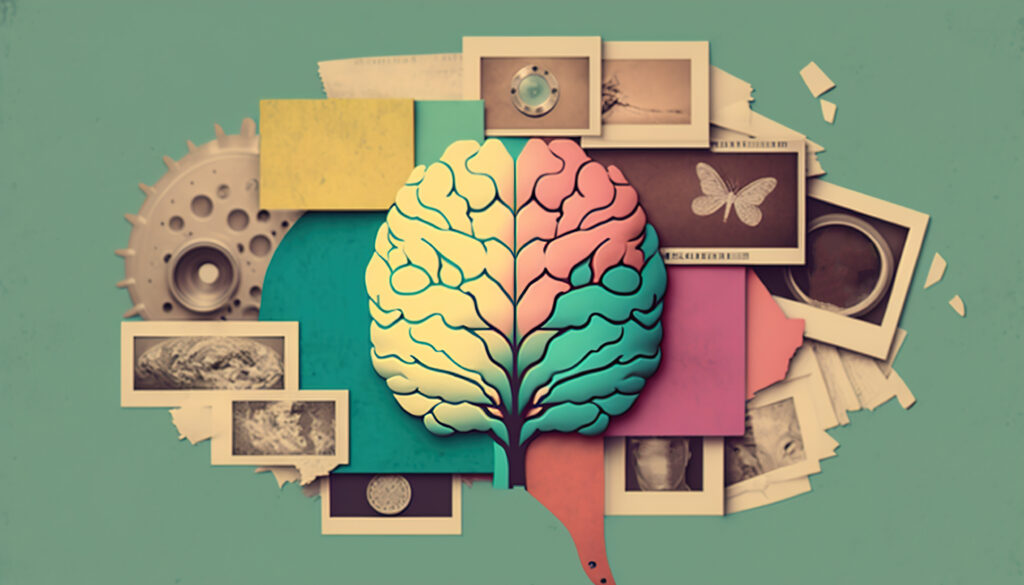Join us on this enlightening journey as we unravel the secrets behind lucid dreaming. Get ready to discover how science and imagination converge in the realm of dreams, giving individuals the power to control their own dreamscapes.
What is Lucid Dreaming?
Lucid dreaming is an intriguing phenomenon that involves the experience of conscious awareness within dreams. In a lucid dream, the dreamer becomes aware that they are dreaming and can actively participate in and even manipulate the dream scenario.
Lucidity in dreaming occurs when the dreamer recognizes that they are dreaming, allowing them to navigate through the dream world with a sense of control and presence. This heightened state of consciousness enables individuals to engage in vivid and immersive dream experiences.
There are various techniques that can be employed to induce lucid dreaming. One such method is reality checks, where individuals perform regular checks throughout the day to determine whether they are dreaming or awake. This practice helps train the mind to question reality, increasing the chances of achieving lucid dreams.
“Lucid dreaming provides a unique opportunity to explore the depths of our subconscious mind and tap into our creativity in ways that are not possible in waking life.” – Dr. Elizabeth Reynolds, Dream Researcher.
Another method is wake-induced lucid dreaming, which involves waking up from sleep and then intentionally re-entering a dream with the awareness of being in a dream state. With practice and persistence, individuals can develop greater proficiency in inducing lucid dreams and experiencing conscious awareness during sleep.
Techniques for Inducing Lucid Dreams:
- Reality Checks
- Wake-induced Lucid Dreaming
- Mnemonic Induction of Lucid Dreams (MILD)
- WILD-WBTB (Wake-Induced Lucid Dreaming – Wake Back to Bed)
Lucid dreaming offers a fascinating avenue for self-discovery, creative exploration, and personal growth. It allows individuals to step into a world where imagination knows no bounds and opens up the possibility of overcoming fears and turning nightmares into empowering experiences.
Unlocking the potential of lucid dreaming may hold profound implications not only for personal insights and growth but also for fields such as psychology, neuroscience, and virtual reality research. By understanding the mechanisms behind lucid dreaming, we can deepen our understanding of the complexities of the human mind and consciousness itself.
The Science Behind Lucid Dreaming
In this section, we will explore the scientific research conducted on lucid dreaming. Scientific studies have provided fascinating insights into the brain activity patterns observed during lucid dreaming, shedding light on the neurological explanations behind this phenomenon.
Researchers have used advanced neuroimaging techniques, such as functional magnetic resonance imaging (fMRI) and electroencephalography (EEG), to study changes in brain activity during lucid dreaming. These studies have revealed distinct patterns of activity in areas of the brain associated with self-awareness, decision-making, and emotional regulation.
One notable finding is the increased activation of the prefrontal cortex, a region responsible for higher cognitive functions, during lucid dreaming. This heightened activity suggests that individuals experience a state of heightened self-awareness and conscious control over their dream experiences.
“Lucid dreaming provides a unique opportunity to investigate the neural correlates of consciousness and explore the boundaries of human perception,” says Dr. Daniel Erlacher, a leading researcher in the field of lucid dreaming.
The neurological explanations of lucid dreaming revolve around the interaction between different brain regions involved in dream generation and cognitive processes. It is believed that during lucid dreaming, there is an increased synchronization between the prefrontal cortex and the regions responsible for dream generation, such as the parietal cortex and the amygdala.
Scientific research on lucid dreaming is significant in understanding the mechanisms behind this phenomenon. It not only provides valuable insights into the nature of consciousness but also opens up possibilities for potential applications, such as improving sleep quality, enhancing creative problem-solving abilities, and even aiding in therapy for nightmares.
In the next section, we will explore various techniques that can be used to induce lucid dreaming and increase the likelihood of experiencing this unique state.
Techniques for Inducing Lucid Dreams
In this section, we will explore various methods to induce lucid dreaming and increase the chances of experiencing this fascinating phenomenon. Lucid dreaming allows individuals to become aware of and control their dreams, making it an exciting avenue for self-discovery and exploration.
Reality Checks
Reality checks serve as a powerful tool in the quest for lucid dreaming. These checks involve questioning the reality of your surroundings regularly throughout the day. By making a habit of asking yourself, “Am I dreaming?” and carefully examining your surroundings, you train your mind to perform similar checks in your dreams. When this awareness carries over into the dream state, you can recognize subtle inconsistencies and trigger lucidity.
Some effective reality checks include:
- Pinching yourself: The absence of pain or unusual sensations might indicate that you are dreaming.
- Reading text: Text in dreams often appears blurry or changes when you read it multiple times.
- Looking at clocks: In dreams, time can be distorted, and clocks may display impossible or constantly changing times.
By incorporating reality checks into your daily routine, you develop a heightened sense of self-awareness that can carry over into your dream world.
Wake-Induced Lucid Dreaming
“Wake-induced lucid dreaming (WILD) is a technique that involves transitioning directly from a waking state to a lucid dream without losing consciousness. It requires discipline and practice, but the results can be profoundly rewarding.”
To attempt WILD, follow these steps:
- Prepare for sleep by creating a calm and comfortable environment.
- Lie down in a comfortable position and relax your body.
- Maintain a focused yet relaxed state of mind.
- As you start to drift off to sleep, stay aware of the transition from awake to dreaming.
- Visualize and imagine your desired dream scenario, gradually stepping into the dream world with lucid awareness.
With practice, wake-induced lucid dreaming can become a reliable technique to enter a lucid dream state consciously.
Aside from reality checks and wake-induced lucid dreaming, there are other proven methods to increase the likelihood of experiencing lucid dreams. These include keeping a dream journal, practicing meditation, and using external devices like lucid dreaming masks or specialized audio programs.
By exploring and applying these techniques, you can develop the skills to enter the captivating realm of lucid dreaming and unlock the full potential of your dreamscapes.
Benefits and Applications of Lucid Dreaming

Lucid dreaming offers a myriad of benefits that go beyond simply experiencing vivid and immersive dreamscapes. This phenomenon has captured the interest of researchers, psychologists, and individuals alike, showcasing its potential for enhancing creativity, overcoming nightmares, and improving overall well-being.
- Enhancing Creativity: Lucid dreaming provides a unique platform for exploring one’s imagination and unlocking creative potential. By becoming fully aware and conscious within a dream, individuals can actively shape and manipulate their dreamscapes, allowing for unrestricted artistic expression and the ability to delve into uncharted territory. This heightened level of lucidity has been shown to spark inspiration, foster innovative thinking, and assist with problem-solving in various creative fields.
- Overcoming Nightmares: For those plagued by recurring nightmares, lucid dreaming offers a powerful tool for conquering fears and finding relief. By recognizing when they are in a dream state, individuals can regain control and transform frightening scenarios into more positive outcomes. This newfound ability to confront and overcome nightmares can lead to improved sleep quality and reduced anxiety, ultimately promoting a sense of empowerment and well-being.
- Personal Growth and Self-Reflection: Lucid dreaming can serve as a catalyst for personal growth and self-reflection. Through lucidity, individuals gain insights into their subconscious mind and gain a deeper understanding of their thoughts, emotions, and desires. This self-awareness can foster personal development, facilitate introspection, and provide a platform for exploring unresolved issues or gaining clarity in waking life.
“Lucid dreaming offers a gateway to a realm where the boundaries of reality are blurred, empowering individuals to tap into their creative potential, conquer fears, and embark on a journey of self-discovery.” – Dr. Julia Anderson, Psychologist
While the benefits of lucid dreaming are truly remarkable, it’s important to note that it requires practice, patience, and dedication to achieve lucidity within dreams. Techniques such as reality checks, keeping dream journals, and meditation can significantly enhance one’s ability to experience lucid dreams on a regular basis.
As researchers continue to unravel the mysteries of lucid dreaming, its potential applications extend beyond personal growth and creativity. From virtual reality therapy to lucid dream therapy for post-traumatic stress disorder, the possibilities for utilizing lucid dreaming in therapeutic settings are being explored, paving the way for new avenues in mental health treatment.
Lucid dreaming, with its profound benefits and multifaceted applications, offers a fascinating glimpse into the untapped potential of the human mind.



































